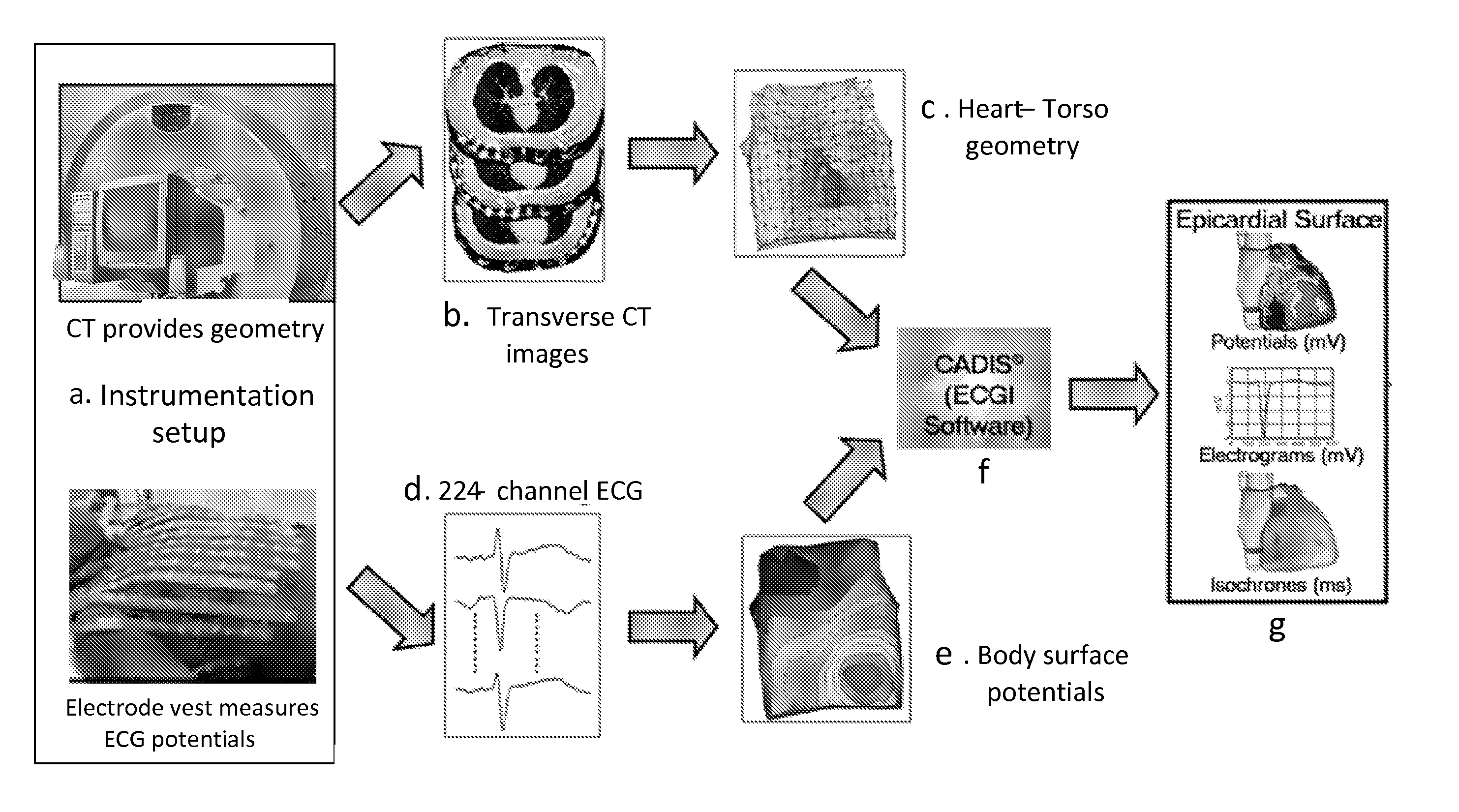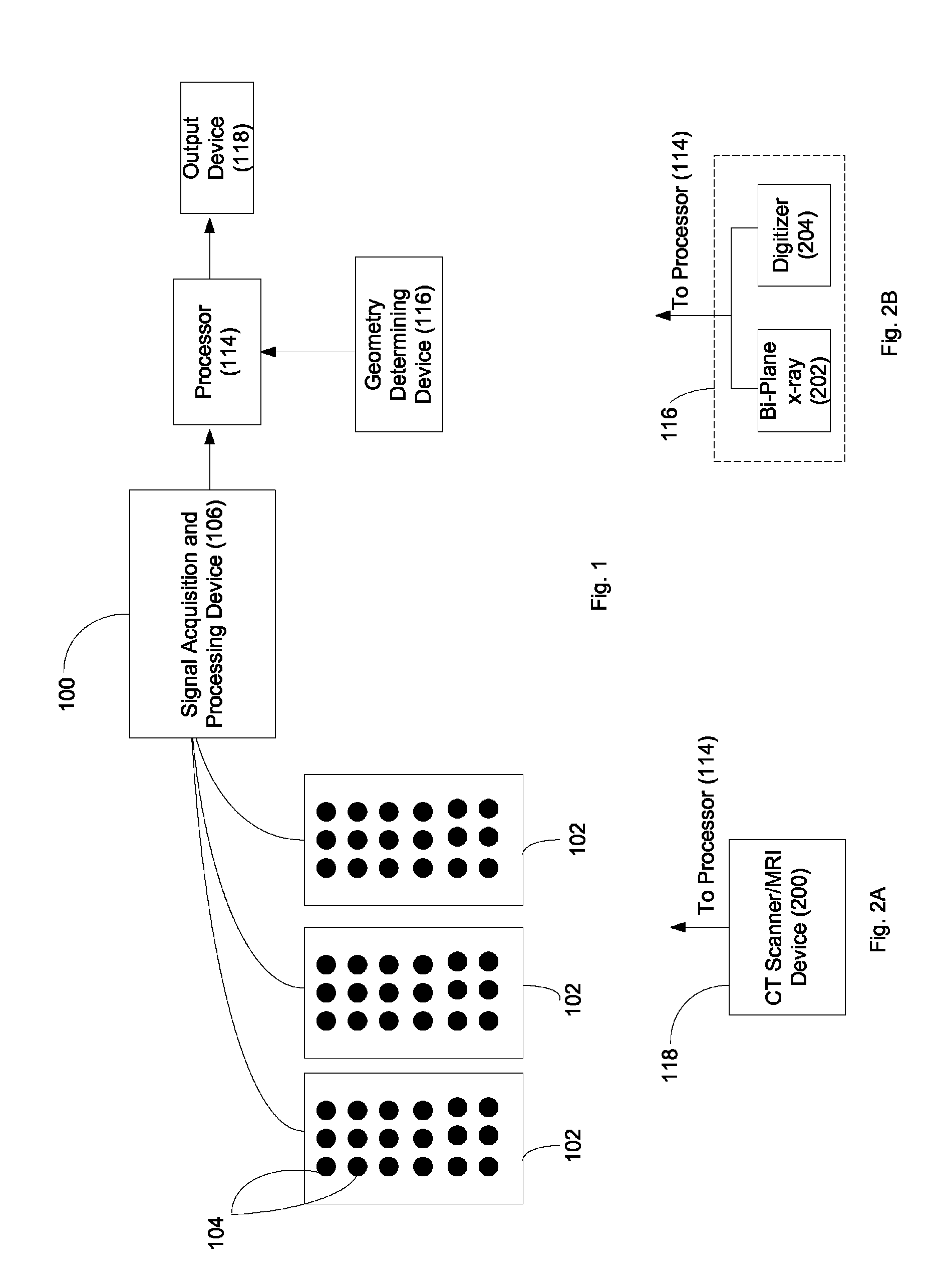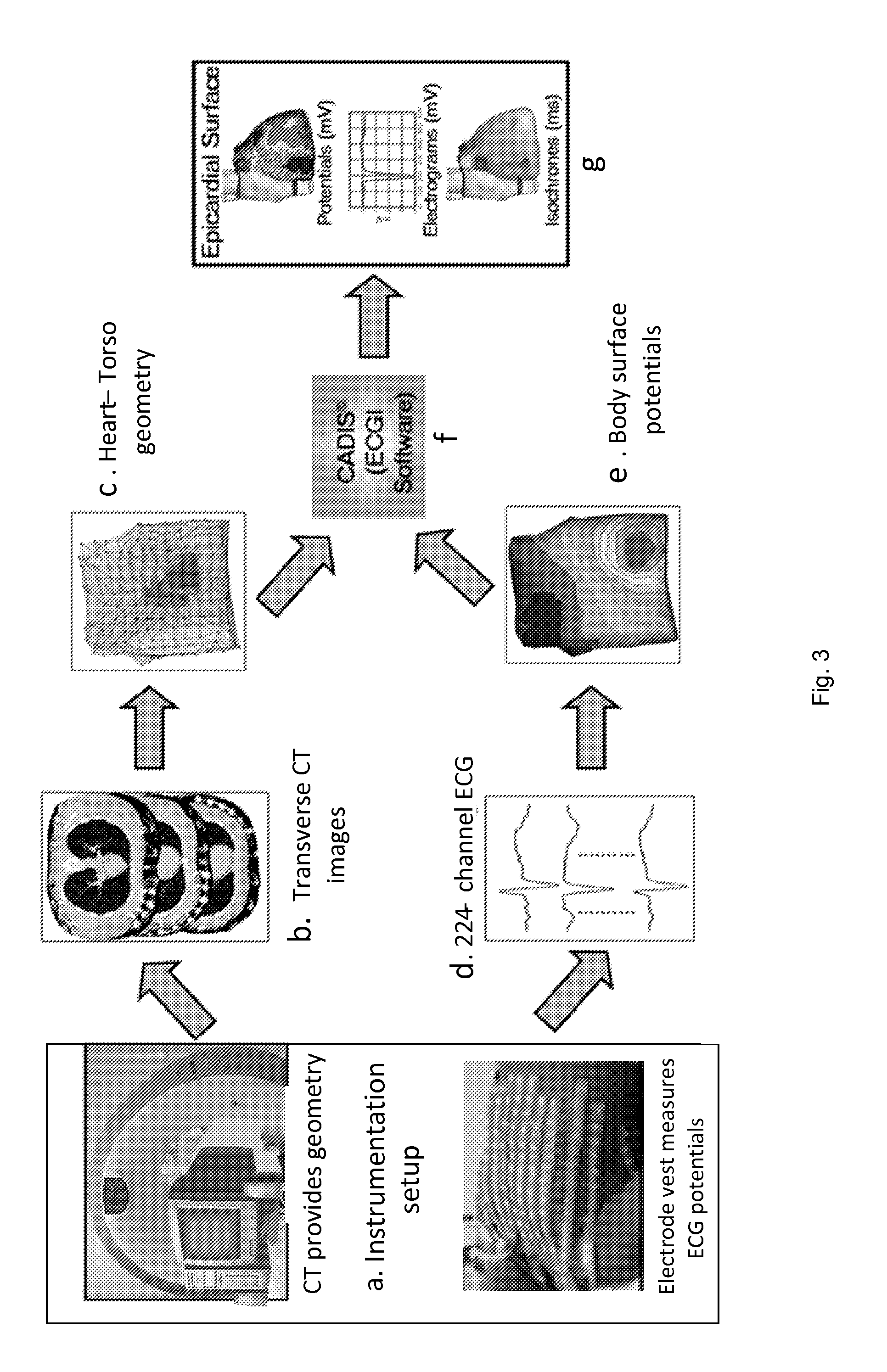System and method for noninvasive electrocardiographic imaging (ECGI)
a non-invasive electrocardiographic and imaging technology, applied in the field of improvement, can solve the problems of reducing the applicability of bem ecgi to clinical applications, requiring large memory resources, and requiring iterative time-consuming tasks, so as to improve the turnaround time of ecgi, reduce complexity, and improve the effect of accuracy
- Summary
- Abstract
- Description
- Claims
- Application Information
AI Technical Summary
Benefits of technology
Problems solved by technology
Method used
Image
Examples
Embodiment Construction
[0028]FIG. 1 depicts a block diagram overview of a preferred system 100 for performing meshless noninvasive ECGI. The system 100 preferably comprises a plurality of electrodes 104 (mounted on strips 102, a vest, or in some other array) in communication with a signal acquisition and processing device 106. The electrodes 104 serve to sense a plurality of electrical potentials on a patient's body surface. The signal acquisition and processing device 106 operates to process this sensed data to a form suitable for digital processing, as is known in the art. The system 100 also comprises a geometry determining device 116 that serves to generate data that is indicative of the geometrical relationship between the electrodes 104 and one or more points of interest within the patient (e.g., the patient's epicardial cardiac surface).
[0029]Processor 114 operates to (1) receive data from both the electrodes 104 (by way of the signal acquisition and processing device 106) and the geometry determin...
PUM
 Login to View More
Login to View More Abstract
Description
Claims
Application Information
 Login to View More
Login to View More - R&D
- Intellectual Property
- Life Sciences
- Materials
- Tech Scout
- Unparalleled Data Quality
- Higher Quality Content
- 60% Fewer Hallucinations
Browse by: Latest US Patents, China's latest patents, Technical Efficacy Thesaurus, Application Domain, Technology Topic, Popular Technical Reports.
© 2025 PatSnap. All rights reserved.Legal|Privacy policy|Modern Slavery Act Transparency Statement|Sitemap|About US| Contact US: help@patsnap.com



